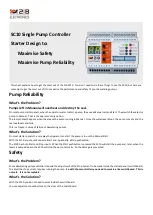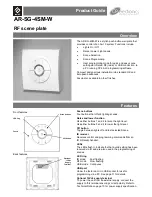
C-1
Appendix A
Point to Point Protocol
Point to point protocol (PPP) was originally designed as a replacement for
SLIP (serial line IP) in sending IP packets a serial line. In addition to its massive
popularity in performing this function, PPP has also been increasingly used for
the transmission of packets over other media. This is due to PPP’s inherent
peer-to-peer nature, allowing for per-connection security and billing.
The TCP/IP stack has built in support for both PPP severs and clients. The
PPP support API is designed to be shared by one or more physical devices.
One obvious device that can be hooked to PPP is a serial line, but the stack
also contains support for PPP over Ethernet (PPPoE). The low level PPP API
as well as Serial HDLC and PPPoE are all discussed in this appendix.
Topic
Page
C.1
Low-Level PPP Support
. . . . . . . . . . . . . . . . . . . . . . . . . . . . . . . . . . . . . . .
C.2
Serial HDLC Client and Server Support
. . . . . . . . . . . . . . . . . . . . . . . .
C.3
PPPoE Client and Server Support
. . . . . . . . . . . . . . . . . . . . . . . . . . . . .
C.4
Creating PPP Server User Accounts
. . . . . . . . . . . . . . . . . . . . . . . . . . .
Appendix C















































